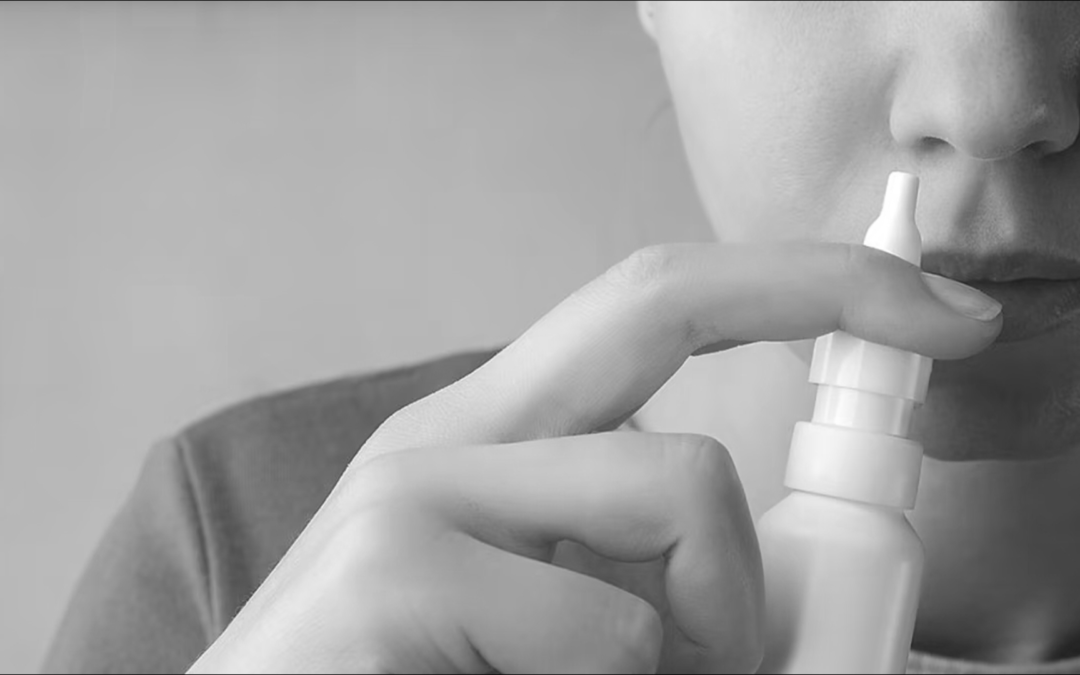The Food and Drug Administration has approved a nasal spray for the rapid treatment of migraines, according to Pfizer.
Zavegepant, marketed as Zavzpret, was approved on Thursday for the treatment of migraines with and without aura in adults. The drug outperformed a placebo in treating symptoms within 30 minutes and for up to 48 hours.
“It’s an exciting addition to our toolbox that keeps growing,” said Dr. Merle Diamond, board member of the National Headache Foundation and managing director of the Diamond Headache Clinic at Saint Joseph Hospital in Chicago, who was not involved in the drug’s development.
According to the National Headache Foundation, a migraine is defined as at least five headache attacks lasting four to 72 hours. According to health experts, episodic migraines are more common than chronic migraines and are characterised by two to eight migraines per month rather than 15 days per month.
“The FDA approval of Zavzpret represents a significant breakthrough for people with migraine who need pain relief and prefer alternatives to oral medications,” Pfizer’s chief commercial officer, Angela Hwang, said in a statement.
Migraine nasal spray provides’very quick’ relief.
According to clinical trial data published in The Lancet Neurology in February, a 10mg dose of zavegepant was more effective than a placebo in relieving pain and other migraine symptoms after two hours.
The nasal spray also relieved migraine pain in many patients within 15 to 30 minutes of administration and lasted up to 48 hours.
“Fifteen minutes is very quick, even for other nasal sprays,” said Dr. Kate Mullin, the trial’s primary investigator and associate medical director at the New England Institute for Neurology & Headache in Stamford, Connecticut.
Approximately 24% of those who took the drug reported pain freedom two hours after treatment, compared to 15% of those in the placebo group, among the 1,405 people who participated in the trial between October 2020 and August 2021.
High placebo rates in migraine trials are not uncommon, according to Dr. Frederick Godley III, an otolaryngologist and president of the Association of Migraine Disorders.
“The strange thing about migraines is that they come and go, and they have a big placebo effect,” he explained. However, according to the Pfizer study, zavegepant “just doubles your chances of getting rid of your headache.”
The most common side effect of the nasal spray was a bad taste, with about 21% of participants reporting strange or distorted tastes. According to a Pfizer statement, some people experienced hypersensitivity, including face swelling and hives.
Other migraine treatment options
Zavegepant, a gepant medication, is the first in its class to be available as a nasal spray.
Gepants work by blocking calcitonin gene-related peptide receptors, which cause intense inflammation and are linked to migraine pain, according to experts.
Zolmitriptan is another nasal spray that treats migraine headache symptoms, but it is a triptan medication. To stop a migraine, triptans reduce inflammation and constrict blood vessels. Triptans may not be safe for people with cardiovascular disease or high blood pressure because of this mechanism, according to health experts.
Although there are oral gepant medications available, Godley believes it is critical to have alternatives.
“Because migraine is associated with nausea and vomiting, medications taken orally are not absorbed because you get sick to your stomach and get rid of them,” Godley explained.
Other drugs in the class include pills, which provide relief in two hours rather than 30 minutes.
What you should know about migraine symptoms
Migraines can cause severe throbbing pain or a pulsing sensation on one side of the head and are frequently accompanied by nausea, vomiting, or light and sound sensitivity.
According to the foundation, a migraine occurs when excited brain cells cause a nerve to release chemicals that irritate blood vessels and cause them to swell on the brain’s surface.
Migraines are most common in women aged 25 to 55, according to health experts; fluctuations in oestrogen before or during menstrual periods, pregnancy, or menopause may cause headaches.
According to the headache foundation, a migraine attack can also be triggered by a change in sleep-wake cycle, missing or delaying a meal, medications, bright lights, excessive noise, stress, or underlying depression.
Aura, visual or sensory symptoms such as flickering lights, numbness, or difficulty putting words together, are common migraine symptoms.

Erin Balsa is a highly skilled and knowledgeable health journalist with a passion for educating the public on important health and wellness topics. With extensive experience in both traditional and digital media, Erin has established herself as a trusted voice in the field.

